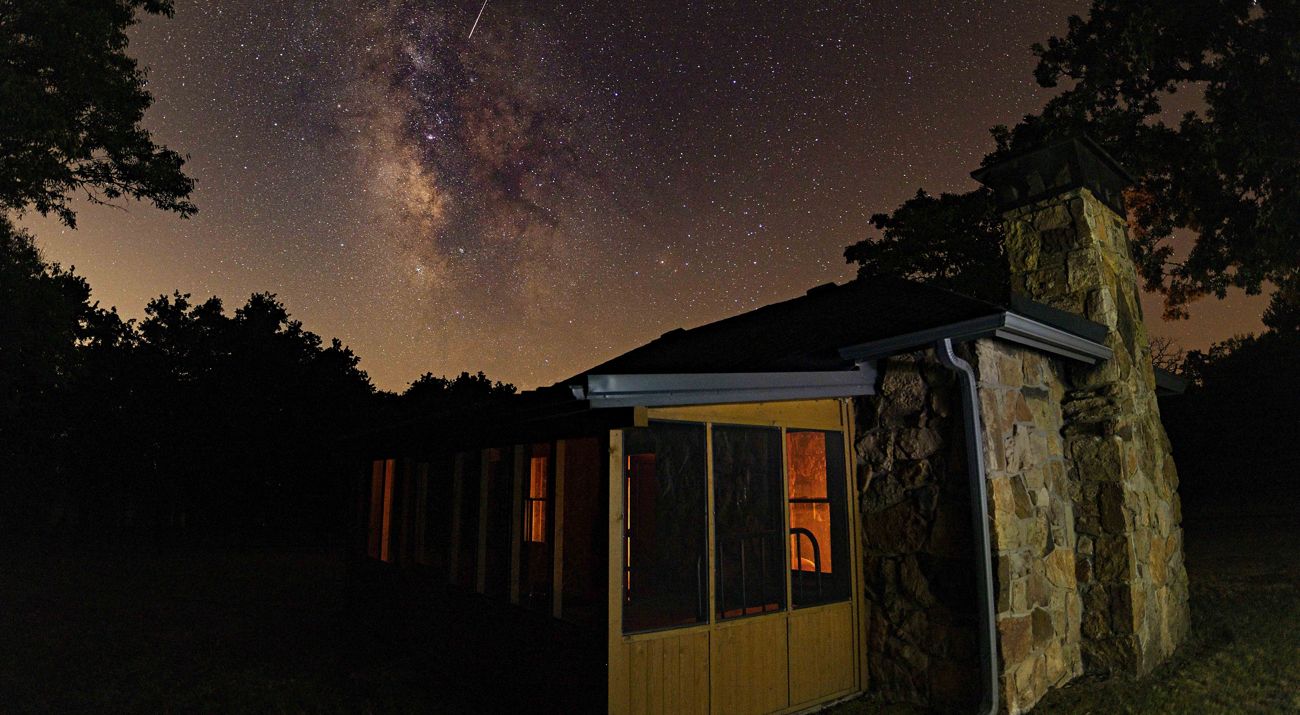
An Osage Historian on the Tallgrass Prairie Preserve
The life and words of John Joseph Mathews.
Historic Cabin Tours
From short stories to detailed histories, Osage historian & conservationist John Joseph Mathews remains one of Oklahoma’s most revered writers and researchers. His works have inspired generations, and much of his life was spent in a small cabin, now located on the Tallgrass Prairie Preserve. We’re pleased to offer monthly tours of this landmark from May through October on the fourth Saturday of the month! Space is limited and tours are free.
If you are interested in attending, each person attending should send an email to tallgrass.docents@gmail.com, noting "(name) is interested in attending the (month) Mathews Cabin tour." Please note that minors can be included by a parent or guardian, and you will receive a reply with the location and information for your tour if slots are available.
See Inside the Cabin
Storytellers Harvey Payne and Patricia Webster give us an inside look at John Joseph Mathews and his historic cabin.
Jump to Video
“To hunt, To Bathe, To Play, To Laugh—That is to Live!” A rally cry, words of wisdom and the life motto of Osage author and historian John Joseph Mathews. In his secluded cabin, he painted this motto across the fireplace mantel prominently displayed and forever proclaiming his enthusiasm for living life fully. This historic cabin, known as The Blackjacks, now stands as a monument to Osage and literary history at the Joseph H. Williams Tallgrass Prairie Preserve in Pawhuska, OK. An Osage scientist, naturalist, hunter, veteran, artist and historian, Mathews devoted his life to living fully and, in doing so, honoring his heritage and beloved Tallgrass prairie.


A Diverse Background
John Joseph Mathews was born in November 1894 in Pawhuska, Oklahoma to William Shirley and Eugenia Mathews. Mathews, recognized as one-eighth Osage, had his roots passed from his great-grandmother, A-Ci’n-Ga, who married “Old Bill” Williams, a well-known missionary and Mountain Man. Mathews’ mother, Eugenia, came from a French family who immigrated to Oklahoma. This diverse family ancestry led Mathews to have a life unlike that of other Osages and positioned him to bridge the gap between traditional, native knowledge and the realities of life with white influence.
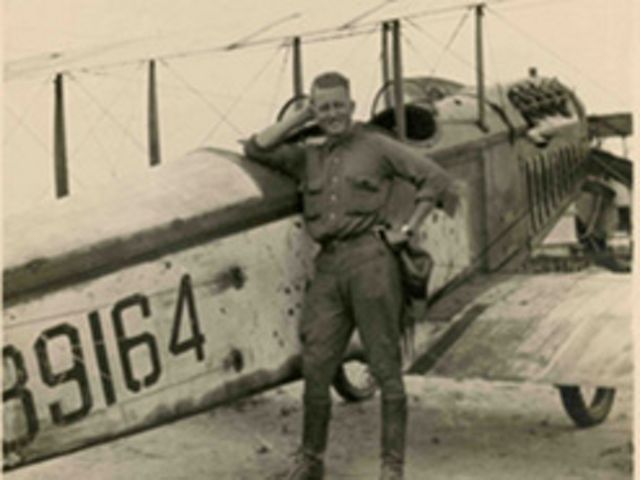
Growing up on the expansive Tallgrass prairie, Mathews spent his childhood riding his horse named Bally with his dog Spot across the landscape, dreaming of one day becoming an ornithologist, a person who studies or is an expert on birds. When life was interrupted by World War I, Mathews served by studying aerodynamics and ultimately became a pilot who tested military inventions and transported photographers examining bomb trajectories. After the war, he went back to the University of Oklahoma, completing a degree in geology and later obtaining a second degree in natural sciences from Oxford—one of the school’s first graduates of American Indian descent.
"We are fortunate he [Mathews] chose to use his talents bridging generations, cultures and world views,” says Geoffrey M. Standing Bear, principal chief of the Osage Nation. “My conversations with the last generation of Osage first-language speakers revealed how highly most of them thought of John Joseph Mathews and how he presented their voices in his books."
Before returning to the United States, Mathews toured Africa, observing native cultures and visiting a Roman bath in Algeria, where he learned of what would become his life motto: “To hunt, To Bathe, To Play, To Laugh—That is to Live!” Inspired to live fully and to honor the rich history of the Osage, Mathews committed to study and document the culture and traditions of his own tribal nation.
Quote: Geoffrey M. Standing Bear
We are fortunate he chose to use his talents bridging generations, cultures and world views.
Writers’ Retreat and Inspiration
After spending a few years in Pasadena, California, Mathews returned to Pawhuska for good. In 1932, he built his stone cabin on his ancestral land, aspiring to “devote a few years to pleasant, undisturbed living.” This cabin, which he called The Blackjacks, after the native trees surrounding it, is where Mathews wrote the majority of his books and articles.
As associate editor for Sooner Magazine and columnist for the Pawhuska Journal-Capital, he wrote about the animals, nature, hunting, ecology, conservation and geology of the Osage Reservation. His first book, Wah'kon-tah: The Osage and The White Man's Road, was published in 1932 by the University of Oklahoma Press. This was also the first book by an academic publisher to be selected for the Book-of-the-Month Club and would later become a bestseller.
Mathews' Complete Works
1932: Wah’kon-tah: The Osage and the White Man’s Road
1934: Sundown
1945: Talking to the Moon
1951: Life and Death of an Oilman: The Career of E.W. Marland
1961: The Osages: Children of the Middle Waters
2012: Twenty Thousand Mornings: An Autobiography (Published posthumously; written 1965-67)
2015: Old Three Toes and Other Tales of Survival and Extinction (Published posthumously)
His second book, Sundown (1934), realistically portrays the difficulties of a mixed-race Osage man struggling to survive the oil boom of the early 1920s. During this time, in addition to becoming the richest Indigenous peoples in America, the Osages faced murder and corruption as their white "guardians" conspired to gain control of Osage headrights and all the wealth that came with it. The numerous murders of the 1920s were named the Reign of Terror, which ultimately led to the establishment of the Federal Bureau of Investigation.
By 1945, Mathews had completed and published his third work, Talking to the Moon, a memoir of the first 10 years living at The Blackjacks through the lens of the white man’s seasons and the American Indian cycles of the moon. He wrote of the loss of wildlife and the impacts of white settlement and reflected on his influence on the environment. This book has been compared to Henry David Thoreau’s Walden for its observations on solitude, as well as to the works of John Muir for its sensitivity to and philosophical musings of the natural world. According to his daughter, it was his favorite.
“At the cabin, our grandfather lived in synchrony with a natural world untamed by civilization, observing and documenting its complexity, its resilience and its fragility,” says Laura Mathews Edwards, Mathews’ granddaughter. “Visiting him there while we were growing up helped us understand the framework that informed his life and writing—and it had a profound effect on us.”
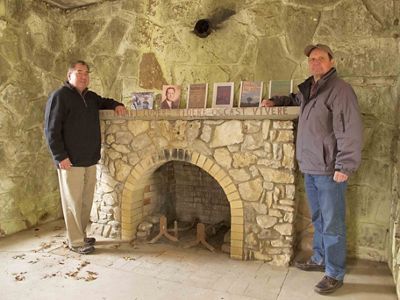
Stay in the Know!
Sign up here to receive monthly updates from The Nature Conservancy in Oklahoma.
Preserving Osage History
In addition to his published works, Mathews served on the Osage Tribal Council spearheading the establishment of the Osage Tribal Museum and leading lobbying delegations to Washington, D.C.
The museum first opened its doors in 1938, with Mathews' sister, Lillian, as its first curator, marking the first tribally owned museum in the country. Now known as the Osage Nation Museum, it can still be visited today in Pawhuska.
When the mineral estate rights provided to the Osage Tribe in the June 1906 Allotment Bill were set to expire, Mathews and Fred Lookout, long-time friend and last hereditary chief of the Big and Little Osages, led a delegation to Washington, D.C. that successfully extended those mineral rights for another 25 years. By its third extension, the mineral rights were secured in perpetuity.
“He was very, very intelligent. Getting a degree from Oxford is pretty unique, especially around here, but his education paid off well for the Osages,” says Harvey Payne, community relations coordinator at the Tallgrass Prairie Preserve. “But what made him better known is what he did for the Osage people. Mathews did more than anyone else to preserve the history of the Osage Nation. The full-blood members were clinging to their ancestral ways and wouldn’t talk to outsiders about their beliefs, customs or way of life, but they would talk to him.”
Osage elders recognized that their traditional knowledge and oral history would be gone when they died. They confided in Mathews so he could chronicle the untold history of the Osage Nation. These stories became Mathews’ fifth book, The Osages: Children of the Middle Waters.
“If Mathews hadn’t done that, this knowledge would have been lost forever,” says Payne.


Conserving the Prairie, Protecting History
The Nature Conservancy in Oklahoma (TNC) established the Joseph H. Williams Tallgrass Prairie Preserve in 1989 with the purchase of 29,000 acres that was part of the historic Chapman-Barnard Ranch. TNC had leased the land owned by the Mathews family for several years before purchasing the property.
By December 2014, the Tallgrass Prairie Preserve expanded to the 39,000 acres that now include the historic cabin of John Joseph Mathews. Since then, the cabin has been restored and furnished.
“Here we are, nearly 50 years later, and I know that nothing would have delighted our grandfather more than the work that The Nature Conservancy has done to preserve the Tallgrass Prairie he loved so much,” says Edwards. “My sisters and I are very grateful that [TNC] has had the resources, expertise and vision to take ownership of his property, restore the house and offer to the public access to his world far more broadly and effectively than we ever could have. It is the perfect organization to have done so.”
Patricia Webster, another Mathews relative, had been interested in becoming a docent for the preserve since its opening in 1989. But it wasn’t until the purchase of the Mathews cabin that she finally decided to volunteer. Patricia has served as a docent since 2016, now guiding tours at her family’s historic cabin.
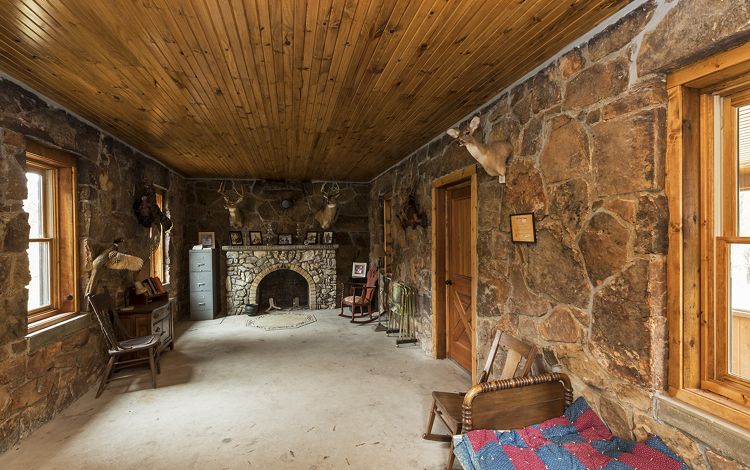
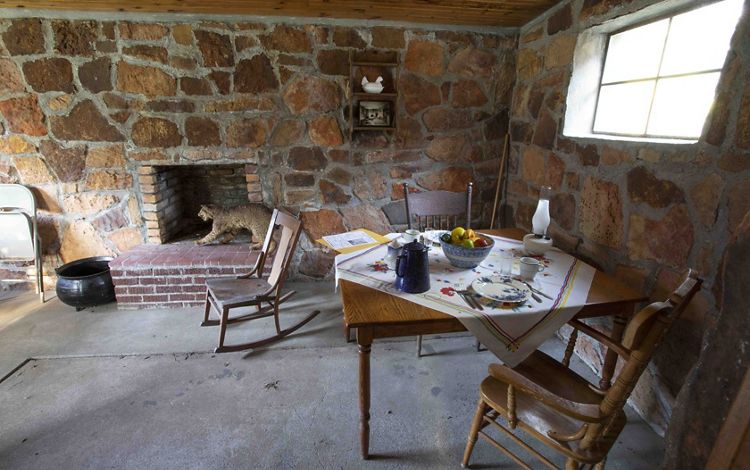
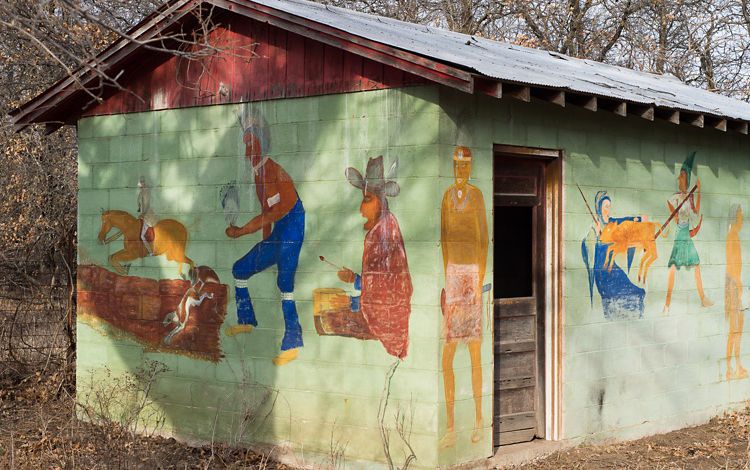
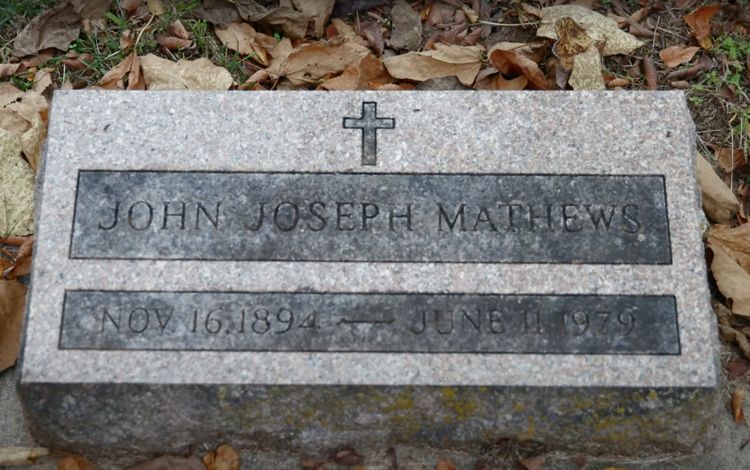
“I am a first cousin, thrice removed from John Joseph Mathews,” says Webster. “My interest in conservation and nature stems from my childhood. We were always taught to leave things better than they were when you got there.”
The Nature Conservancy reintroduced bison to the preserve in 1993. As a native grazer, bison are an integral piece to conserving the tallgrass prairie ecosystem. With the additional acreage and cabin restoration, bison are once again grazing Mathews’ land.
“I think Mathews would be very pleased to know bison are once again roaming the lands around his cabin,” says Payne. “I think he would be doing backflips if he were here to see it.”
In 1979, Mathews was buried near his cabin among the trees in the rolling Osage Hills where, as he wrote in Talking to the Moon, “I was proud of harmony with the life about me. I became a part of it as I had wished.”
“I think he would be honored to know that his cabin and his property are now part of The Nature Conservancy’s Tallgrass Prairie Preserve,” says Webster.
Years later, in 1996, the Oklahoma Historical Society recognized an extraordinary life and inducted Mathews into the Oklahoma Historians Hall of Fame.
Stand Up for Nature in Oklahoma
Since 1986, we have worked to conserve Oklahoma’s magnificent landscapes and unique biodiversity totaling more than 100,000 acres. When you donate today, you will help ensure a thriving natural environment for future generations of Oklahoma.


